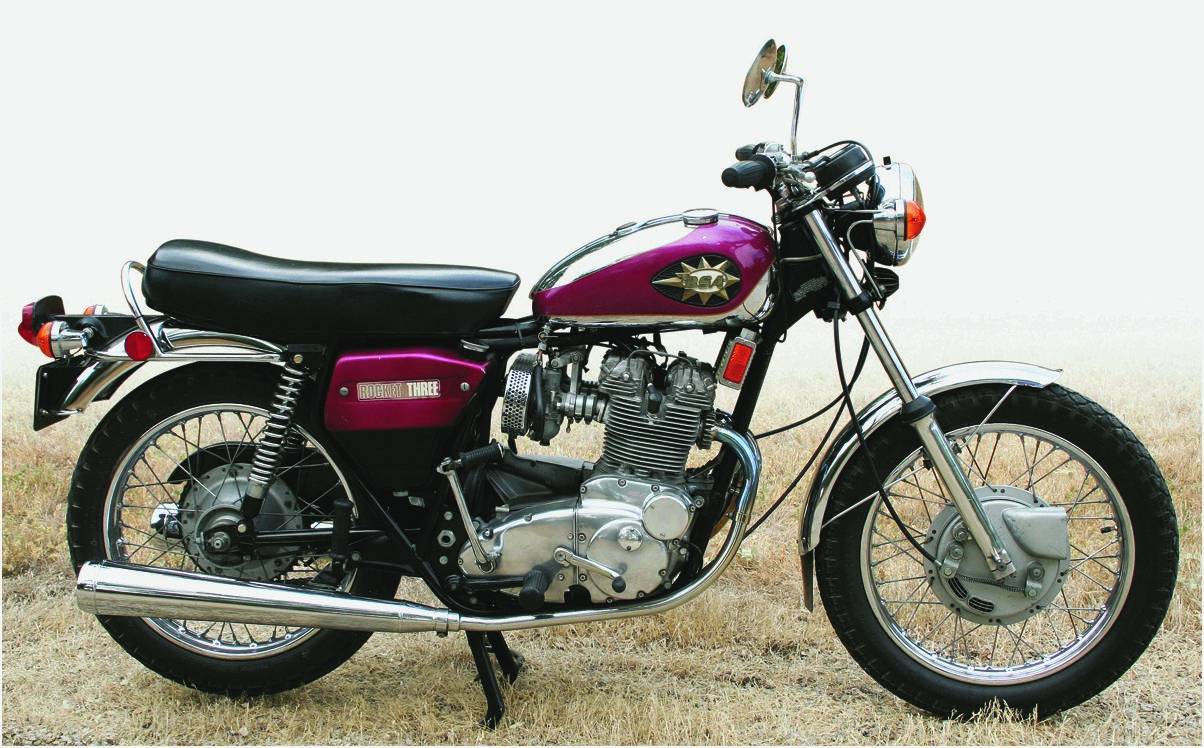
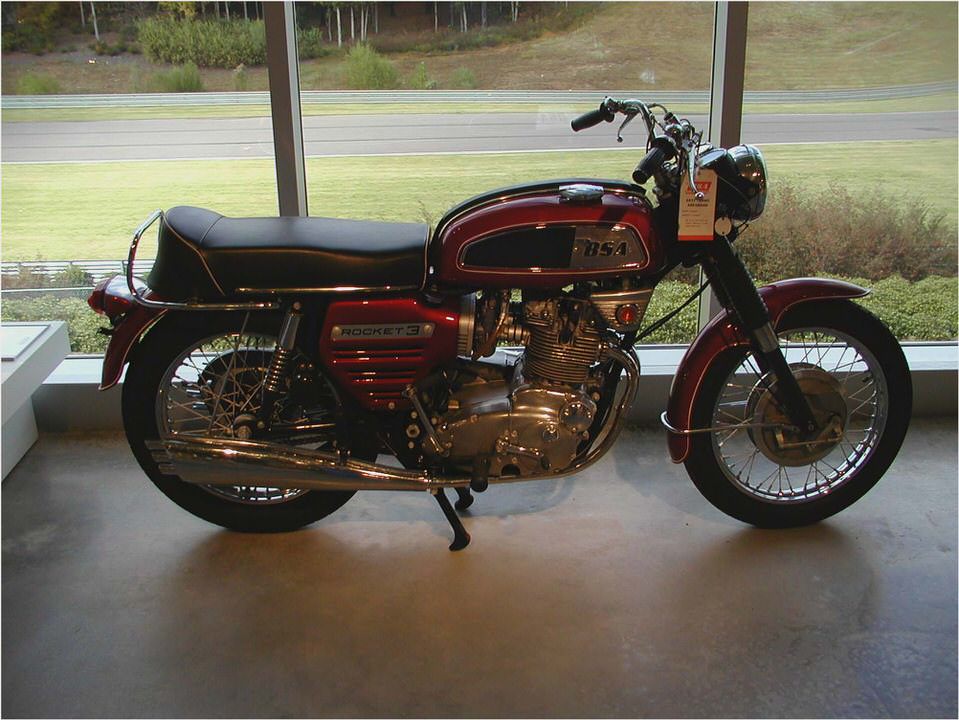
BSA Rocket 3/Triumph Trident
Fuel consumption
30-40mpg
The BSA Rocket Three / Triumph Trident was the first true modern superbike and the last major motorcycle developed by the original (Triumph Engineering Co Ltd) Triumph company. It was badge-engineered to be sold under both the Triumph and BSA marques.
The Rocket3/Trident was the first-step development of Triumph Motorcycles’ plan to move on from the basic vertical twin. The engine was to give the 750 cc power required by the US market while avoiding the vibration associated with an increase in capacity of the existing parallel-twin design.
During its production run BSA fell into financial troubles, and over the course of the official seven year model run approximately 27,480 Rocket3/Tridents were produced. By comparison, around a quarter of a million Honda Goldwing motorcycles were manufactured during its first seven years.
Development
Although designed in the mid-1960s, the engine of the BSA Rocket3/Triumph Trident was based heavily on Edward Turner’s Triumph two-cylinder 500 cc Speed Twin of 1937 and the next year’s sports model Tiger. Because of this, the three-cylinder Trident is sometimes known as the “Tiger 100 and a half”.
However, when the bore and stroke are considered it is actually more like three C15 engines: the unit-construction T100 has a short stroke, unlike the triple’s 67 × 70 mm (2.6 × 2.8 in) dimensions. The pre-unit 500 was 63 × 80 mm (2.5 × 3.1 in), as was P1 – the first prototype Triple. When the rest of the engine layout is investigated, the T100 claim does look genuine. The separate camshafts from the Triumph engine are in evidence.
This basic design was one of the most long-lived in motorcycling history, being used for over 40 years in Triumph’s entire range of vertical twins, including the Triumph Bonneville.
The three-cylinder design was started in 1962 by Bert Hopwood and Doug Hele. While design progressed, test engineers developed the handling of the chassis by loading lead weights onto a standard 650 Bonneville. With the first prototype (P1,A replica of which is now owned by the Trident and Rocket 3 Owners Club – TR3OC) running by 1965, it appeared that Triumph could have a machine in production by 1967.
However, the decision to produce a BSA version with sloping cylinders and to employ Ogle Design to give the early Trident/Rocket3’s their modern ‘square’ look, not only robbed the prototype of its ‘lean’ looks and added 40 lb (18 kg) of weight, but also delayed production by 18 months. During 1966, a P2 prototype was produced with a more production-based Trident engine, with changed bore and stroke dimensions and improved cooling. Later, Doug Hele obtained 90 bhp (67 kW) from a Trident engine, suggesting that if development had sped up in 1964, a 140 mph (230 km/h) British Superbike would have been a reality in 1972.
First modern era superbike
The Rocket 3 / Trident were introduced in the summer of 1968. They were the first modern-era mass-produced multi-cylinder production motorcycles. British Motorcycle magazine Motorcycle Mechanics exclaimed, What a fantastic machine! – a claim they held on to for four weeks before the introduction of the Honda’s CB750K.
The British triple did not have the five-speed gearbox, overhead camshaft, electric start and disc brake of the CB750 and in 1970 Triumph re-styled export versions with the original ‘classic’ look to try to revive sagging sales.
Although all the three-cylinder engines, and the Rocket 3 motorcycle, were produced at BSA’s Small Heath site, final assembly of the Triumph Trident model was carried out at Meriden in Coventry. The major differences were the engine and frame: a double loop with engine mounted at a slant for the BSA and single downtube with engine mounted vertically for the Triumph. The rest was essentially cosmetic: badging and painting.
Racing success allowed the Rocket3/Trident to continue with a four-speed gearbox, as models A75R and T150T. By virtue of their better riding position Triumphs sold better in the US despite BSA’s Daytona racing successes of the early 70. BSA’s sold slightly better in the UK/Europe.
However sales did not meet expectations, and for the 1971 model year a fifth gear was added, creating the models BSA A75RV and Triumph T150V . With mounting financial pressure, about 205 genuine five-speed Rocket3s came off the assembly line before production ceased entirely. The Triumph Trident continued with the 5-speed gearbox for the 1973 and 1974 model years, now with a front disk brake replacing the original drum, resulting in the final form of the T150V. Tom Mellor set four new world speed records at the Bonneville Salt Flats in September 2008 with a 1969 Triumph Trident T150.
For the 1975 model year the Trident was updated to the T160 – as described below.
Slippery Sam
Doug Hele’s development work of the Rocket3/Trident in 1971, working with frame guru Rob North, produced works Formula 750 machines that were extremely successful on the race track. However, probably the most famous single bike was Slippery Sam, a production class Trident prepared by Les Williams and his team. Slippery Sam won consecutive production TT races at the Isle of Man five years running from 1971 through 1975.
Bert Hopwood later recommended making a production version of the racing triple, producing 84 bhp (63 kW) at 8,250 rpm – but his suggestion was ignored, partly due to financial worries.
Racing development in the US was carried out at the Duarte, CA facility under Racing Manager Dan Macias. US BSA/Triumph dealers had agreements for access to factory race parts and due to difficulties in obtaining race frames from the UK, Dan built his own jig and the frames were manufactured by Wenco. The main differences from the factory North frames were TIG welding instead of brazed, flat plate rear engine mounts instead of built-up formed sheet and 4130 Cro-Mo steel material.
Dick Mann’s win at Daytona in 1971 was on a US specification bike.
Triumph X75 Hurricane
Main article: Triumph X-75 Hurricane
When the Triples were designed, the original look was sleek and defined with a rounded tear-drop tank. However, to compete with the newer designs, BSA/Triumph decided to redesign the look using the OGLE design company. This created an 18 month delay and resulted in a squarer look and less traditional BSA/Triumph look – only the BSA was saved by sloped cylinders and ‘RayGun’ silencers.
When the Triples were launched to the American vice-presidents of BSA and Triumph in 1968, they were disappointed. They knew Honda had a bike coming along, and felt the price of $1800 (£895) was too high and technical details like vertically split crank cases ill-thought – which meant continuing oil leaks. However, they did respect the fact that the bike was fast, and the BSA team led by US VP Don Brown (Vice President, General Manager and Director BSA, Inc.
1967 to 1969; reassigned as Vice President, National BSA Sales; resigned 8 January 1970); decided to set some records at Daytona with a stock A75 for launch of the bike – they were later only broken in late 1971 by the Kawasaki Z1.
Brown came home to America, and felt the bike needed a different look to compete. A custom bike enthusiast, he engaged designer Craig Vetter to give the BSA A75 a face-lift. Vetter flew to Nutley, New Jersey for the job interview, and returned on an early BSA A75 with the brief to make it sleeker, more balanced and with a customised look.
Brown had no agreement from BSA group to undertake the redesign, told Vetter he would only get his fee paid as hours when the project was accepted for production, and swore Vetter to complete secrecy. Consequently Vetter had problems getting his $12,000 fee, but only because Brown paid external lawyers to create the contract, and was taking Vetter’s expenses out of petty cash. Vetter rode the BSA A75 back to Illinois, and described it as a great bike, but like riding a board.
In his 1,000-mile (1,600 km) ride, he tried a few designs sketched onto his own publicity postcards for his existing fairing business.
Brown now had to reveal his project to his boss, Peter Thornton – President of BSA/Triumph North America, with whom he didn’t get along. Brown had decided to resign from BSA, but when Thornton heard about the design, he demanded that Brown reveal the details to him or be fired. Vetter was called from Illinois at the October 1969 Sales Conference, and spent eight hours in a stockroom.
Various people came by and looked in, with Vetter getting more nervous – until finally Thornton walked in. There was an audible gasp, and he then blurted out, My God it’s a Bloody phallus! Wrap it up and send it to England!
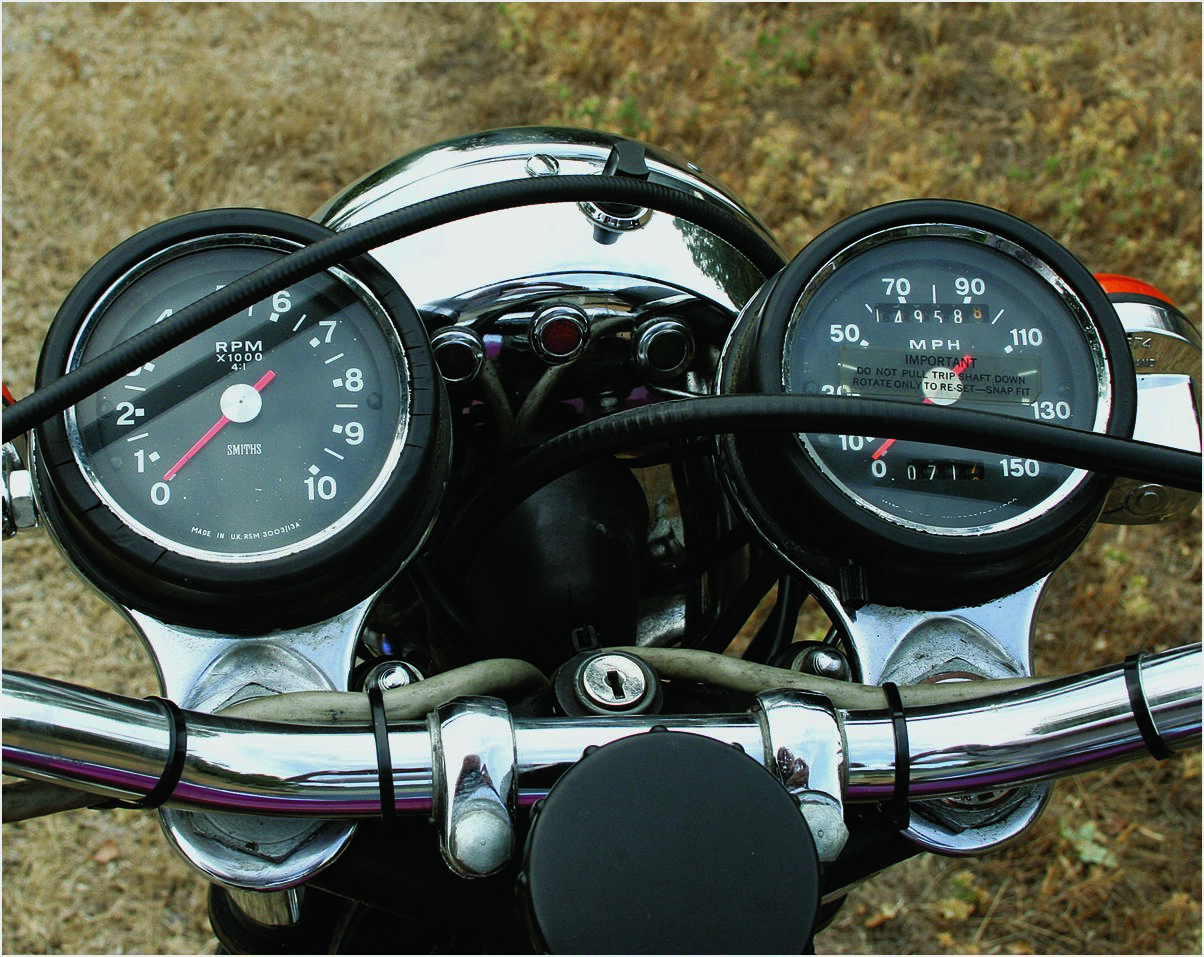
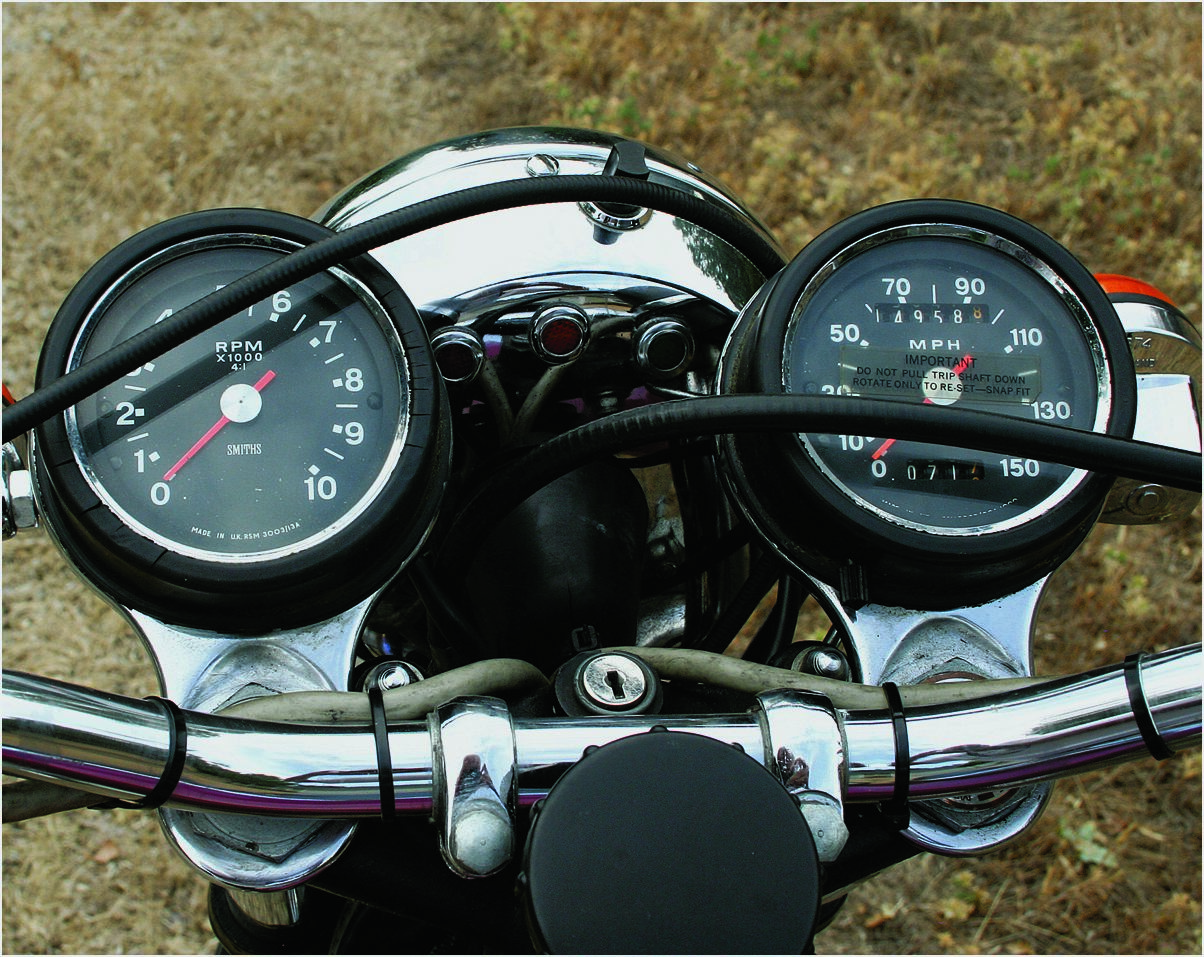
The bike arrived in England just as the BSA marque was about to be ended! Also, BSA-Triumph had set up a design facility at Umberslade Hall, and the design was seen as too trendy by chief designer Bert Hopwood.
It was only after a strong positive reaction by the public to the design as it appeared on the front of US magazine Cycle World in October 1970 that BSA-Triumph realised it had a whole stock of scrap BSA parts that could now be turned into a premium-priced motorcycle, a young engineer Steve Mettam got the job of supervising production for the 1972/3 season. The Vetter BSA Rocket3 became the Triumph X75 Hurricane.
Vetter was paid his $12,000 fee for his work in March 1971, but had a difficult time collecting it and it took several months. 1,183 engines were put aside for X75 production.
The prototype BSA Hurricane, owned for a time by Craig Vetter, is now on display at the AMA Motorcycle Hall of Fame museum in Pickerington, Ohio.
Model T160
In November 1974, production of the T150V ceased, production had switched to the T160 model. The T160 was the result of a number of changes; some due to market response to the earlier Tridents and some due to legislative changes (mainly in the USA).
With forward sloping cylinders (à la BSA Rocket3), electric start and gear-shift moved to the left hand side to comply with American safety legislation, NVT made a last ditch effort to save large scale production and reduce the gap between the Trident and the Honda CB750K. The T160 was produced for little more than a year, at which time NVT collapsed completely. The final batch of T160’s came off the production line the week before Christmas 1975.
In all, 7,000 T160’s were built and sold in 1975.
Production
Model Years: 1975 (although some were made in early 1976 and the last bikes were finally sold in late 1977). Numbers: about 7,211 – the final 130 or so were sold as the Cardinal.
Significant Details
Cardinal
In December 1975, a last batch 288 bikes were destined for Australia and another 224 for the USA. However, NVT diverted them from those highly competitive markets to fulfil an order of Tridents for the Saudi Arabian police force. Police forces in the UK had already switched to BMW motorcycles, but some like the Yorkshire Constabulary still used Tridents.
Five shipments, totalling 450 bikes were sent to Saudi Arabia, but the last 130 were still in the UK when the Saudis cancelled the order – so NVT Motorcycles decided to sell them in the UK as the Triumph Cardinal. At the time the list price of a stock T160 was £1,215. The accessories were worth about £150 – including crash bars, spotlamps, air horns, tri-point screen, panniers, single seat and radio rack – but NVT listed the Cardinal for £1,522.80.
In 1982, Dealers in the UK began bringing the bikes back from Saudi – then two dealers in Sweden and Finland brought back 180 bikes. The bikes had low mileages, but were poorly maintained and totally encrusted in sand. They were restored, and sold out as ‘stock’ T160’s
Thunderbird III
The end
Severe financial and management problems at BSA, along with the rapid disintegration of the entire British motorcycle industry in the early 1970s, led to a government sponsored merger in July 1973 with Norton. However the re-structuring plans announced by the newly formed Norton-Villiers-Triumph Ltd. (NVT), resulted in a workers blockade of Triumph’s home Meriden works in mid-September. Production of the Trident was eventually transferred to BSA’s Small Heath factory in March 1974, but this lengthy disruption resulted in relatively few 1974 Tridents being produced.
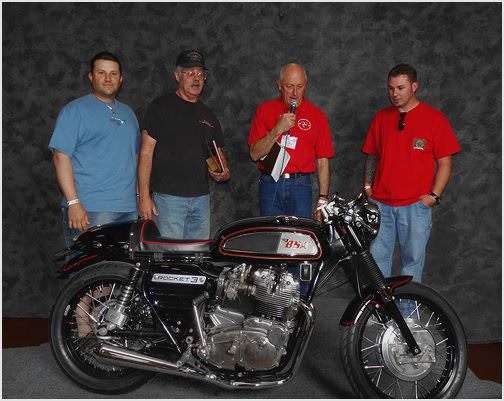
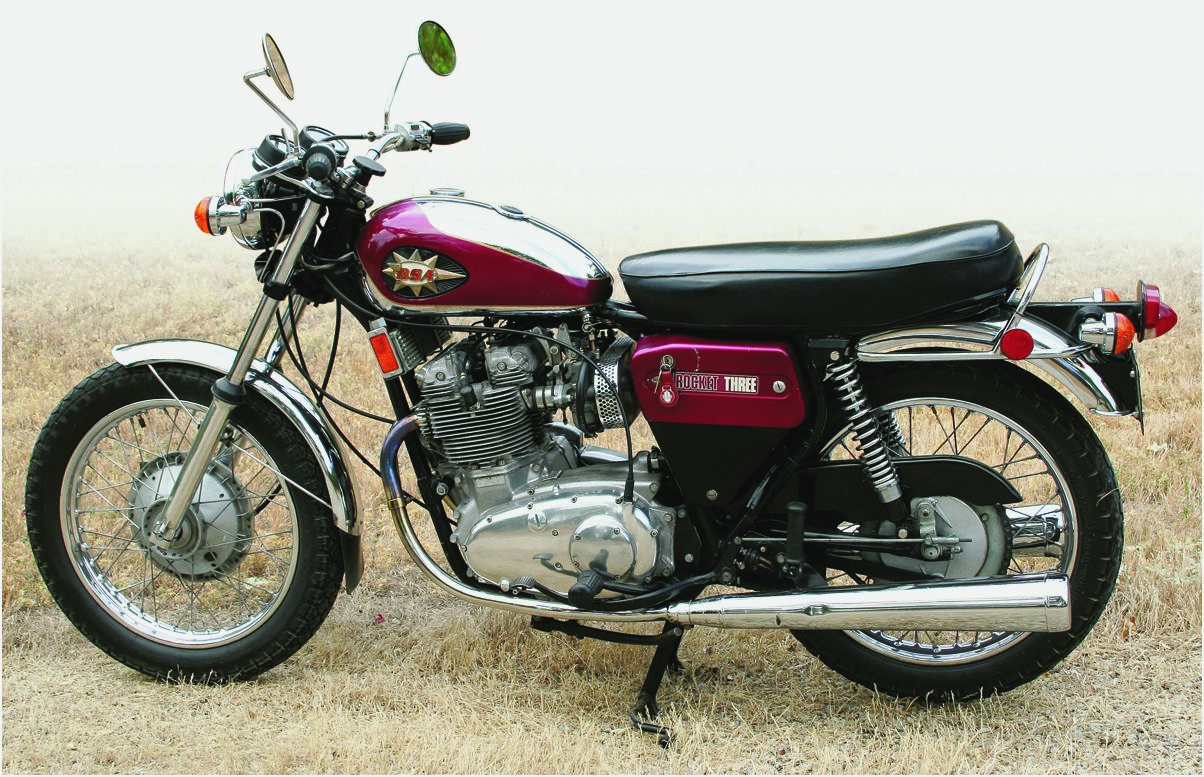
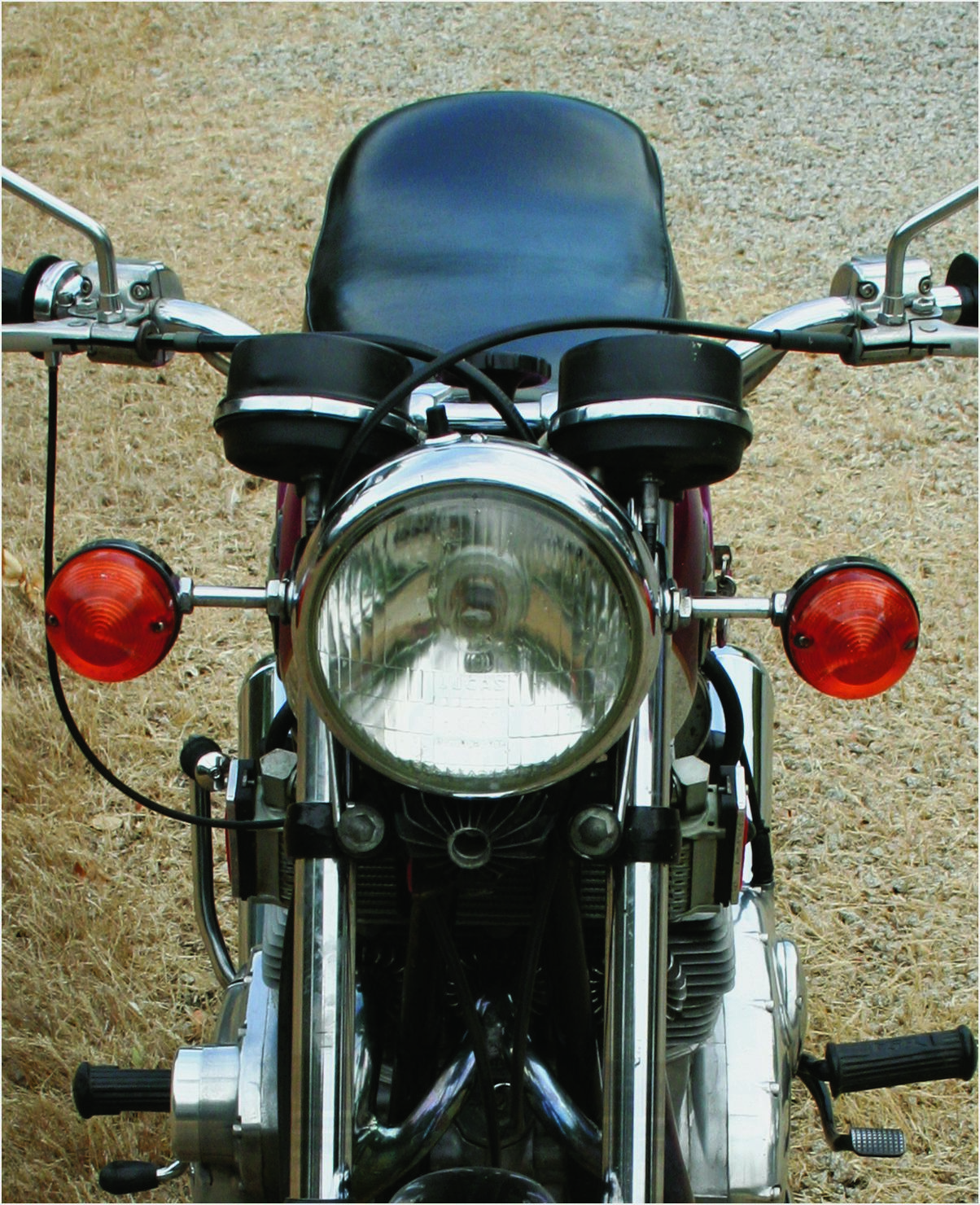
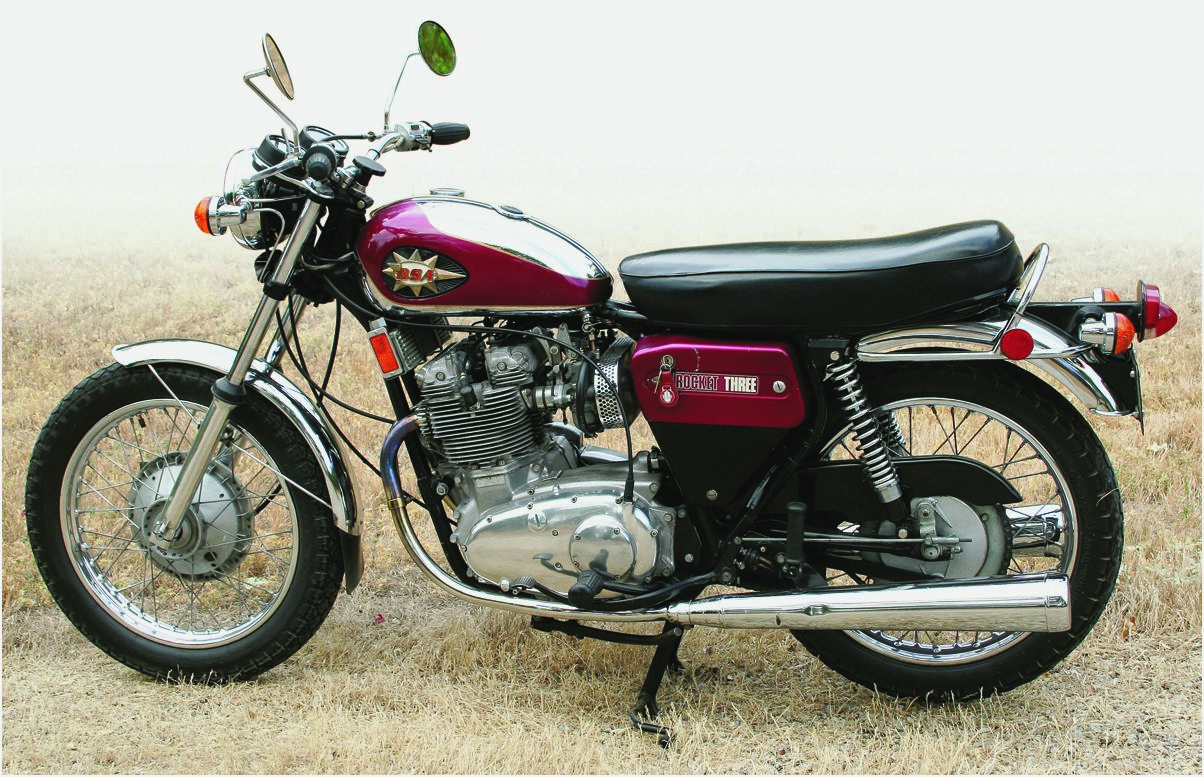
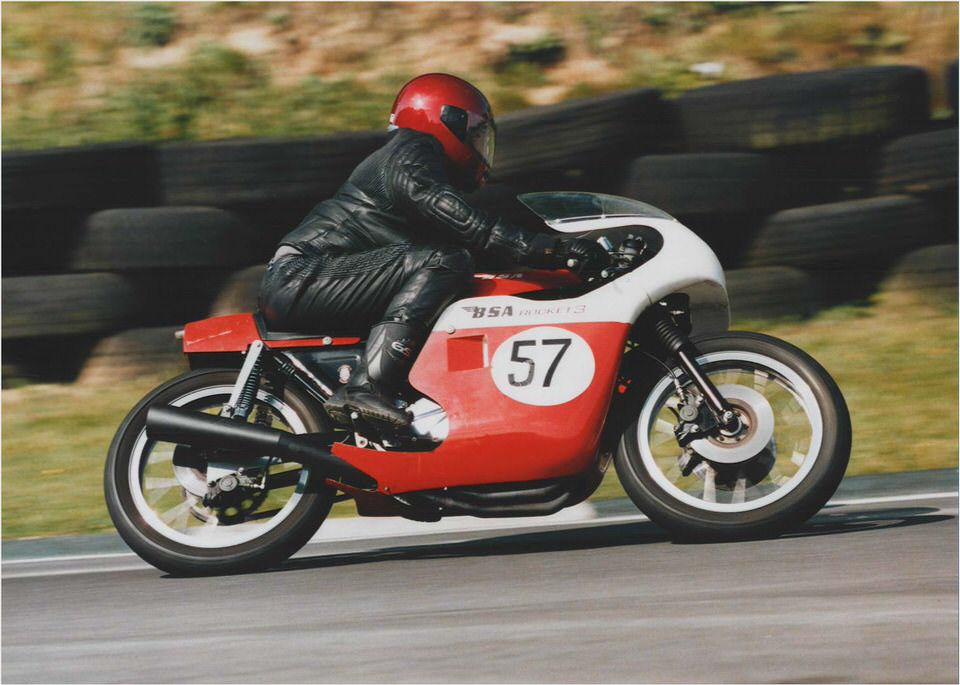
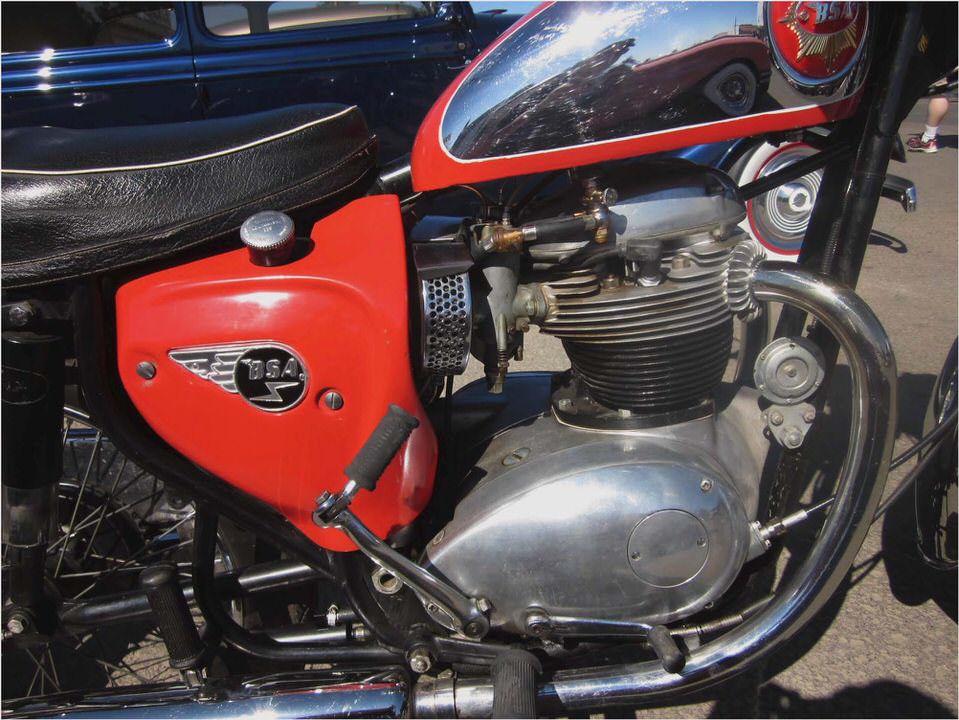
- 1958 BSA DBD34 Gold Star – Motorcycles o – Jay Leno’s Garage
- 1970 BSA Chopper
- BSA B25 Trials
- 1970 BSA Royal Star A50 Classic Sport Bikes For Sale
- Triumph Bikes – Page 2 – Team-BHP
